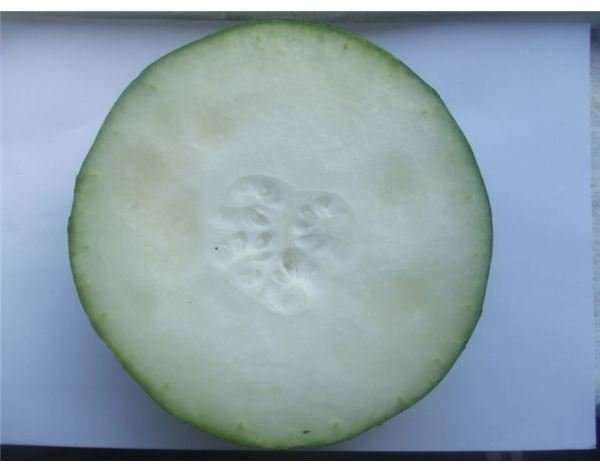The Health Benefits of Ash Gourd: Are They For Real?
Ash gourd, also known as winter melon or white gourd, and identified by its scientific name “Benincasa Hispida,” is a species of tender annual vine common in China, India, and other parts of East Asia.
Ash gourd is rich in moisture and contains small amounts of fat, protein, carbohydrates, and fiber, besides calcium, phosphorous, iron, riboflavin, thiamine, niacin, and vitamin C. The nutritious value of ash gourd makes it a popular diet ingredient in making sweet curries, soups, and tea.
The major benefits of ash gourd, however, lie in its medicinal properties. Ash gourd finds a place as a popular natural cure for a wide range of ailments in traditional medicinal practices, and recent research has substantiated the role of ash gourd as a natural healer.
Ash Gourd Benefits Related to its Low Calorie Nature
Ash gourd is wholesome and nutritious, and also low in calories. This makes ash gourd an effective cure for both obesity and general debility. The pulp of ash gourd boiled in sugar syrup is a common treatment for general debility, to restore weight lost due to ailments such as weakness of heart, thinness of semen, anemia, and tuberculosis.
Ash gourd benefits related to its low-calorie property extend to countering the harmful effects of diabetes. Research substantiates ash gourd as an excellent natural cure for diabetics.
Ash Gourd Benefits Related to its Cooling and Laxative Nature
The cooling and laxative properties of ash gourd bring forth many benefits. The following are some such benefits:
- Consumption of ash gourd removes urinary blockages and improves other urinary dysfunctions.
- Ash gourd boosts secretion and removes constipation.
- Ash gourd provides natural remedies for libido.
- The seeds of ash gourd increase vaginal discharge.
- Ash gourd intake counters periodic attacks of hysteria and convulsions.
- Ash gourd contributes to detoxification of the body by prompting discharge of urine.
Benefits of Ash Gourd Juice
Ash gourd juice finds many applications as a natural medicine. Some such applications are as follows:
- Consumption of ash gourd juice diluted with an equal quantity of water in the morning and evening on an empty stomach is a traditional cure for peptic ulcer and inflammations in the alimentary canal.
- Fresh ash gourd juice mixed with a teaspoon of gooseberry juice or limejuice stops bleeding from lungs and nose, and helps alleviate piles and haematuria.
- Mouth gargle with ash gourd juice helps protect teeth decay and bleeding of gums. Research indicates this practice is an effective treatment for mouth cancer.
- Ash gourd juice makes an effective antidote in cases of mercury poisoning and snakebites.
Other Curative Applications of Ash Gourd
Traditional medicinal practices such as Ayurveda use ash gourd for a wide range of applications. The following is some of such applications substantiated by research.
- Ash gourd controls common cold, cough, fever, sinusitis, bronchitis, influenza, and asthma without any side effects.
- Ash gourd is alkaline and has a strong antacid action that helps maintain the pH of the body and counteract the acidity caused by acidic foods such as soft drinks, fried, and denatured food.
- The seed of ash gourd is anabolic. Consumption of ash gourd seeds with coconut milk expels tapeworm and other worms from the intestine.
- Ash gourd seeds and skin peels boiled in coconut oil stimulates hair growth, prevent dandruff, and remove dryness of the scalp.
DISCLAIMER: This article does not constitute medical advice. Readers are requested to consult a certified medical practitioner before acting on the advice contained in this article.
References
- Uberoi, Meera. “Ash Gourd. Natural Healer.” Prevention magazine (November 2008).
- “What’s good about ash gourd?.” TimesWellness.com. Reterieved from https://www.timeswellness.com/index.aspx?page=article§id=7&contentid=2009072720090726134815312543d231a
- Dixit, Usha & Goyal, V. C. “Traditional Knowledge Systems For Healthcare and Wellness of Elderly People.” Retrieved from https://www.niper-ddnptm.com/ProceedingsOfDDNPTM2008.pdf#page=97
Image Credit: Wikimedia Commons
